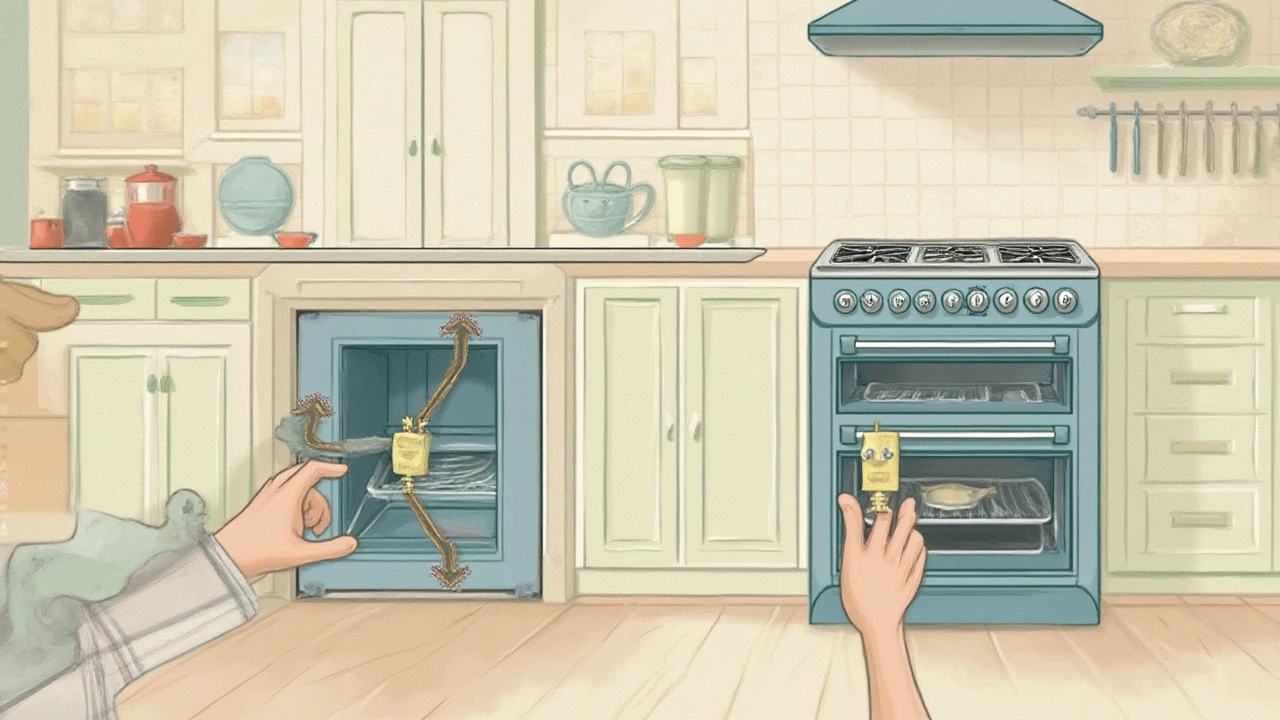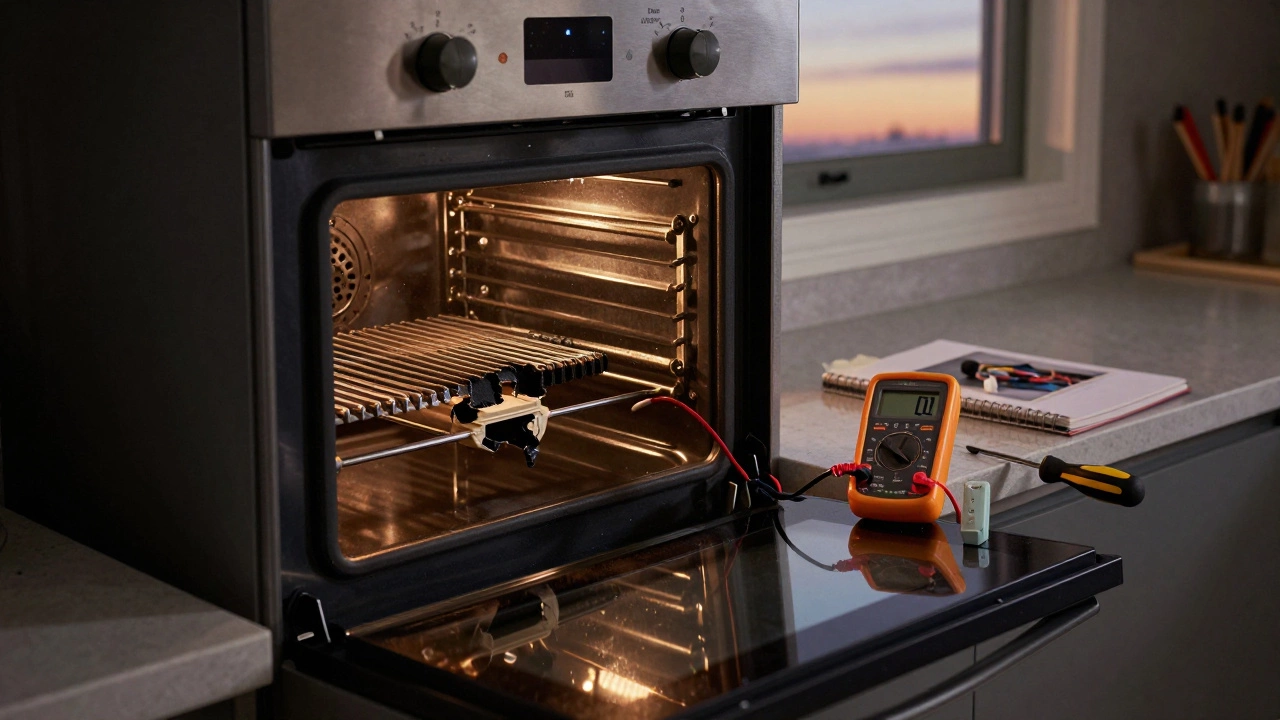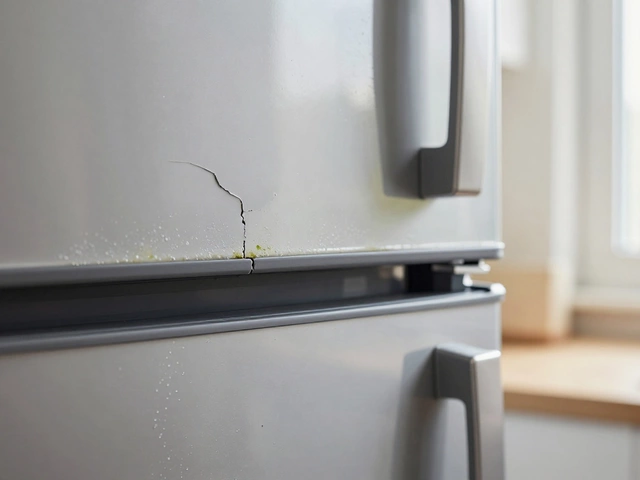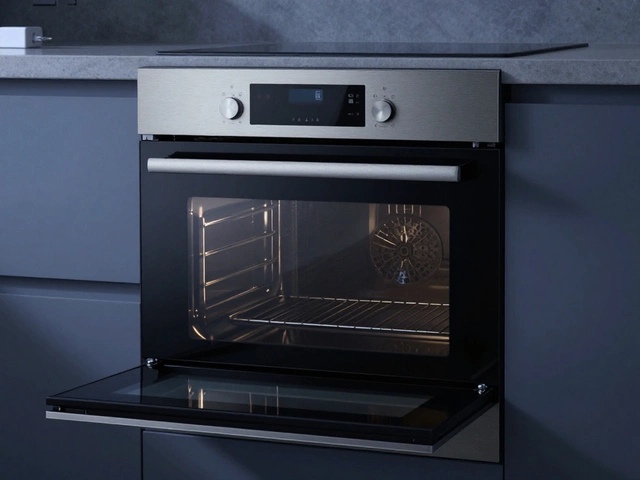Pizza night just got derailed—and now you're staring suspiciously at your electric oven, silently begging it to come back to life. It's not just an appliance; for those with hungry kids, a craving for homemade cookies, or a Sunday roast in mind, an oven on the fritz feels a bit like a minor kitchen emergency. Before visions of pricey repairs race through your head, take a breath. Most electric oven failures aren't caused by mysterious, unsolvable glitches. There's usually a logical reason—and often, a fix that's within your reach.
Common Electric Oven Problems That Catch People Off Guard
When your oven suddenly calls it quits, it rarely gives you a polite warning. One moment it's preheating like a champ; the next, nothing. But what actually goes wrong? At the top of the usual suspect list: power issues. It sounds obvious, but thousands of homeowners discover after a panic call to a repair tech that a tripped circuit, faulty plug, or dodgy outlet is the real villain. Since ovens pull a hefty amount of juice, a spat with your home’s electrical system isn’t rare—especially if you've got older wiring or you've just had a power surge after a summer storm. Worth knowing: unlike most kitchen gadgets, ovens often have their own dedicated breaker. A quick trip to your fuse box can save time and cash.
If your oven gets power but still acts dead, the second likely culprit is the heating element. Electric ovens usually rely on a lower bake element and an upper broil element; both can go bad with age, especially if they’ve been exposed to sudden jolts—like splattered cold water on hot coils. If you notice uneven cooking, or the element looks blistered or broken, that’s a tell-tale sign. For many models, replacing these yourself is possible (just remember to unplug first), though newer ovens might require special order parts thanks to clever manufacturers who want you to use their official service teams.
Another sneaky troublemaker is the oven’s thermostat or temperature sensor. These play a huge role in modern ovens and can fool you into thinking your oven isn’t working at all. A burned-out sensor might stop the oven from heating up, or you’ll find preheat takes forever. If you’ve got an oven with a digital display, any error codes that flash up during meltdown will often point straight at the sensor—Google the code with your model, and you might get a bullseye diagnosis.
Timers and control boards aren’t immune to trouble either. The electronic brains behind today’s ovens can freeze, fail or glitch out—sometimes after a brief blackout, or even if you’ve accidentally showered the control panel in cleaner (it happens). Unresponsive touchscreens, flashing lights, or weird beeping? Don’t rush to replace the whole oven just yet. Try a full power cycle; unplug the oven for ten minutes and let it reset. It’s low-tech, but it solves surprising numbers of strange oven complaints.
Can’t forget about the door switch. It’s easy to overlook, but if the oven thinks the door isn’t shutting correctly—thanks to a faulty latch or warped seal—it may refuse to start for safety reasons. Check for food debris or grime around the mechanism, and see if the oven light goes off as expected when you close the door. If not, you may be dealing with a simple but critical mechanical hiccup.
And here’s one for the record: a study in 2022 revealed that almost 15% of electric oven failures are due to household pests—mice chewing wires or insects nesting near warm control panels. If your kitchen is prone to creepy-crawly guests, don’t rule them out.
Troubleshooting Steps: What You Can Fix Without Calling In Reinforcements
Before you even think about hauling the oven out or hunting down a repair tech, there’s quite a bit you can check safely at home. Power is always step one: is the outlet working? Try plugging in something else to double-check. If you’re in the dark, check your fuse box for tripped breakers or blown fuses. Reset anything that’s out of place, and see if that revives your oven. Some homes have a special wall switch that controls oven power—sounds silly, but accidental flips happen plenty (ask any parent with small kids!).
Bake and broil elements, if visible, are usually easy to inspect. Flip the oven on and, while it's cold, look for breaks, burnt spots, or sagging sections. If you see sparks when you turn it on or if a coil doesn't glow red, it’s toast. To swap one out, you’ll generally need a screwdriver to remove a mounting plate, and each wire just pops off the connectors (snap a phone pic so you remember what goes where). Parts for popular brands are sold in most hardware stores or online, typically for $20 to $40—a bargain compared to a service call.
If your oven has a digital display, pay close attention to error codes. Manufacturers like GE, Whirlpool, and Bosch have online lists that translate cryptic blinks into specific problems: faulty sensors, misbehaving fans, or even simple clock errors. Don’t ignore the obvious—if the display says “Lock” or “Child Lock,” and you can’t start the oven, you might just need to press and hold a button for five seconds to unlock it. Sounds minor, but saves frustration for anyone with ambitious toddlers who like pressing buttons.
Can’t get the oven door to engage? Check for anything blocking the latch: crumbs, old foil, even melted cheese. For doors that won’t close flush, feel around the gasket for rips or warps. If the oven still thinks the door is open, even when it’s not, replacing the door switch is usually a cheap fix and takes less than thirty minutes for most models (YouTube is your friend here).
Uneven heating or a wildly off-temperature oven often comes down to calibration—or a dying sensor. To check calibration, grab a cheap oven thermometer from any supermarket. Heat the oven, compare the reading to your settings, and note the difference. If it’s off by 15-20°F, look up how to recalibrate using your model’s settings. If recalibration doesn't work, odds are the sensor is shot. Sensors are usually a thin probe on the oven wall, easy to unscrew and swap out.
Still nothing? Give your oven an old-fashioned reset—unplug or flip the breaker for ten minutes, then try again. Like computers, modern ovens sometimes just need a digital timeout to sort themselves.
By following these steps before you call in backup, you might just save yourself a bunch of money—and get your kitchen back in shape before anyone realizes dinner’s late.

When to Call a Pro (And When to Replace Instead of Repair)
Alright, you’ve done the basics. Still stuck with an oven that’s deader than disco? Sometimes, the problem lies deeper: fried wiring, a fried control board, or catastrophic heating failure. Modern ovens—especially those with convection, steam, or smart features—can have complicated innards. If you smell burning plastic, see exposed wires, or hear popping noises, shut the power off fast. Electrical repairs inside the main cavity or to the wiring harness should be left to pros, unless you’re handy and know exactly what you’re doing.
Getting a technician in isn’t as expensive as you might fear. As of 2025, the average oven repair call in the US runs about $140 to $250, including labor and parts for routine problems. But if the diagnosis is a failed control board, replacement parts can be pricey—$300 or more isn’t unusual for high-end models. Here’s where it pays to do a little research. If your oven’s seven years old or more, or if you’ve had three or more repairs in the past two years, it’s probably time to look at putting that cash toward a new model. Energy efficiency has jumped in recent years, and modern ovens can save around $30-$60 a year on electricity compared to older ones.
Warranties can make all the difference. Don’t forget to check yours—many major brands now offer extended parts warranties, especially on elements and sensors, for up to five years. If your oven is still under warranty, you could get parts (or even an entire replacement) for little or no cost, as long as you follow the manufacturer’s process. Pro tip: document everything, including model and serial numbers, before you call.
If you do decide to replace rather than repair, look at models with features you’ll actually use. Convection is handy for even browning, but steam-assisted ovens are still a bit niche for everyday cooks. Check energy ratings—look for models with an Energy Star label, if available—and always measure the cavity and door clearance before you buy. You’d be surprised at how many people get a new oven delivered, only to discover it won’t fit through the kitchen door.
Don’t toss the old oven straightaway, either. Many local recycling schemes or retailers will haul away and recycle it responsibly for free or for a small fee.
Pro Tips to Keep Your Electric Oven Running Longer
The average electric oven lasts about 13 to 15 years, but with a little care, you can keep yours humming even longer. First, regular cleaning is key—not just for your health, but for the oven’s electrical parts. Letting grease and spills pile up on elements and behind the control panel can create hotspots and even start fires. Try to wipe down spills once the oven cools and do a deeper clean every few months. Avoid spraying cleaners directly onto knobs or the control panel; use a damp cloth instead to stop moisture from getting inside and shorting things out.
When baking or roasting, avoid covering racks or elements with foil for easier cleanup. This can trap heat, damage sensors, and even melt onto elements, all of which can shorten your oven’s life. Use pans with lids or baking sheets with parchment paper if you’re worried about drips.
Check your oven door’s seal every few months. Cracks or gaps let heat escape, making the oven work harder and bake unevenly. Replacement gaskets are cheap and easy to swap in—much easier than overhauling your heating system after the fact. If your oven doesn’t seem to hold heat, or you notice higher energy bills, the seal is a smart place to start looking.
Occasionally, reset your oven’s electronics—especially after power surges or outages. Surge protectors can help protect your oven’s delicate control board from zaps during storms. If you’re in a region with frequent outages, it’s a really smart investment (usually under $50 and way cheaper than a new board).
Be aware of pests, especially if you live in rural or older homes. Pet food or crumbs near the oven can lure mice and cockroaches right into the cavity and wiring. A bit of preventative cleaning and proper food storage can save you a headache—and a call to both pest control and appliance repair.
If you’re into heavy-duty oven use, don’t neglect professional maintenance every few years. Some companies offer a full tune-up for under $100, checking wiring, elements, and calibrating temperature. For serious bakers or large households, it’s worth the peace of mind.
Don’t forget: keep all user manuals and warranty information in one spot. Having quick access to model numbers and troubleshooting guides can shave hours off repairs—and in plenty of cases, help you ace that DIY fix before you even think about calling for help.
Last but not least, trust your gut. Strange smells, noises, or glitchy behavior are never "just how it is." The faster you investigate, the more likely you are to stop a small problem from turning into a kitchen catastrophe.




